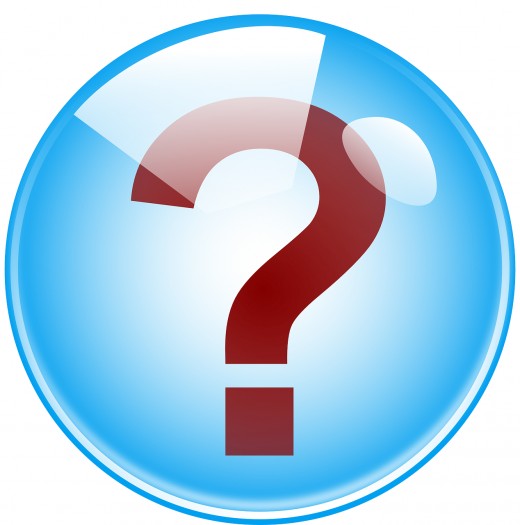Exploring Information We Receive Today
Introduction
This is an article to answer three questions presented at HubPages.com Q&A section. It explores briefly the discoveries and gives answers. The questions were:
“Can most Americans understand and define the differences among true information, misinformation, disinformation, information spin, and propaganda? In fact, what are they, and what do you see most in the USA?”
From the question I think inferred is news reporting and journalism as the context otherwise known as the media. But, media also includes news passed through idle conversations. Word of mouth advertising has been given the number one means of spreading information in the world of marketing. So, we may conclude we rely on our family, friends, and those we exchange with as much as if not more than broadcasting and newsprint.

Example of Information
True describes the state of something in accordance with a fact or reality. Although it relates to a statement of fact, truth is something else. The application of true is easier for:
- Who
- What
- Where
- When
- How
But, it is more difficult for why and how much. Why asks for an interpretation of facts to arrive with a truth. We see that in media with commentary and opinion. How much can attribute to the effect of the conclusion for why, which again is commentary or opinion.
Truth is an abstract noun that means quality or state of being true. An abstract noun is "a noun denoting an idea, quality, or state rather than a concrete object". Key is it is abstract, which means; “Existing in thought or as an idea but not having a physical or concrete existence”. In other words, it exists in the mind. An abstract noun relates to an individual’s ideals, perceptions, and perspectives. Here is where disagreements may occur since each individual is different when defining an abstract noun. Some examples of them are:
- Human Qualities or characteristics; Beauty, compassion, fear, intelligence, wisdom and courage
- Emotions and feelings; anger, delight, joy, love, misery, power, worry and pain
- Others: Belief, hearsay, faith, gossip, trust, law, liberty, mercy, omen and opinion
Example for a true statement and a truth:
- The sky is blue is a commonly accepted fact and is true.
- It is cloudy, rainy, and grey, so the sky is blue is not a truth.
A lie can travel half way around the world while the truth is putting on its shoes.
— Mark TwainNow, the above is the example of information. Using it we can now ask:
- Is it true information?
- Is it misinformation?
- Is it disinformation?
- Is it information spin?
- Is it propaganda?
Let's get spin out of the way. Spin is used with public relations and has a biased interpretation seeking to persuade public opinion. For example, I did present a bias that truth is not the same thing as something is true. Through 'inference' one may or may not decide a false truth can arrive from that presentation and its true statements.
There was basically four type of knowledge in the short treatise. Those are:
- Common knowledge while we can question common
- Quotes from sources, although not cited
- Opinion while remembering we each have one
And, inference arrived upon by the individual reader’s reasoning especially for the abstract noun truth
One may safely conclude the common knowledge and quotes are true. Questionable are the offered opinions and any inferences drawn by the reader. So, we discover there are statements of fact used to persuade or educate the reader leading them to determine a meaning for a truth. That is being true and being a truth is not necessarily the same thing especially with journalism in the media today with its commentary and opinion.

Misinformation and disinformation are partners but aren’t married
They both are using false information, but there is the difference. Their meanings are:
Misinformation is “false or inaccurate information, especially that which is deliberately intended to deceive”. Here one must decide intent. Misinformation can be innocent, although it is false. EX: One employee learned the store will be open until midnight on Christmas Eve and shares with another. The intent was not to mislead, but only to inform the other coworker, although may in fact be false.
Disinformation was first introduced into dictionaries around 1980. It is “intentionally false or misleading information that is spread in a ‘calculated’ way to deceive ‘target’ audiences”. Disinformation is purposefully using misinformation and when disseminated intention is to deceive with a goal. In other words, there is a strategy. Importantly, it is a tool of propaganda.
It is most used by a power ranging from a person of authority to organizations, i.e. groups, news agencies, corporations, and governments. EX: When one of those perpetuates a false rumor with purpose they are providing disinformation. For instance, the business leaders spread the rumor the store will be open to midnight. They actually wanted to determine a probability of employee discontent of extending hours open on a daily basis.
If people in the media cannot decide whether they are in the business of reporting news or manufacturing propaganda, it is all the more important that the public understands the difference, and choose their news sources accordingly.
— Thomas SowellBriefly, what is propaganda?
Books have been written about propaganda so its history and usage is lengthy. There are records of it dating as far back as when man began writing. Its etymology is Latin that begins at 1622 by the Catholic Church meaning to spread or propagate. At that time it had a noble meaning for propagating the Catholic faith in non-Catholic regions. It was a practice used during the time of reformation especially since there was the advent of the printing press.
Beginning the 18th century it was being used in the secular world and had a neutral meaning. With its development it became a wartime tool. One purpose was a faction seeking uniting the people against another. It entered the 19th century having a pejorative meaning or negative connotation becoming popular within political spheres as a strategy. During WWI it was used to cause moral to drop and rebellion within the ranks of the enemy. Since then its techniques used within strategy have been modernized with the advancement of varying psychology and communication, e.g. social media.
Today, its meaning is “Information, especially of a biased or misleading nature, used to promote a political cause or point of view.” It has been said it costs less to use propaganda to defeat a foe than it does to go to war. The key is it is a tool. Important to its modern usage is it seeks emotional responses and uses psychology to persuade. The goal is winning support or alignment on positions, issues, and causes.

Answers to the questions and summary
“Can most Americans understand and define the differences among true information, misinformation, disinformation, information spin, and propaganda?”
I can really only give testament I had an idea of what they meant. However, I have a better understanding now. Next, am I one of ‘most Americans’? I think most can detect who, what, where, when and how and determine if true or not. Yet, why and how much is a variable based on those who seek to present a truth, which is abstract.
I think most lump misinformation and disinformation into the same meaning because they are false information. I know I did. What I learned with how used in media is disinformation is a tool of propaganda whereas misinformation can be innocent.
Spin I think is likened to an opinion seeking to sway opinion. I think most see in that context. True facts are recognized but there is a difference with interpretation. Usually, they have their own opinion based on their observations, experience, and knowledge, which they judge with. And, they can spin their interpretation especially with word of mouth. So, perhaps it is more obvious and subjective.
“. . . [W]hat do you see most in the USA”? My answer simply is all of them. It is a lot harder for me to decide which one is used more in two different contexts; informal news exchange, e.g. conversations, and news reporting/journalism by the enterprise. That can be private, public, and governmental. I know I will give more thought to presentations with news broadcast, opinion shows, and round tables as well as newsprint or internet articles.
The world is a complex place, and the influence of media in its representation and its power of communication and interpretation is a remarkable amplifier of emotions, and of illusions.
— Tariq RamadanThis discussion could cover other areas that may be considered germane. Those are (Hint: They are abstract nouns):
- What is knowledge?
- What is trust?
- What is faith?
- What is belief?
- What is a responsibility?
Okay, using those in a sentence for information through reporting or journalism I arrive with; for my knowledge, I trust ____________ in good faith s/he or they are presenting the information responsibly and that is what I form my belief on. That seems to answer the adage, “Consider the source”. However, there always remain ‘until’ shown otherwise, which is subject to acceptance or rejection. A key seeking objectivity is having an open mind and the option to assess more than one source for an individual’s truth through true facts.
© 2017 Tim Mitchell








